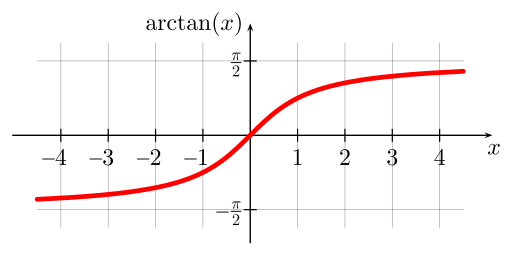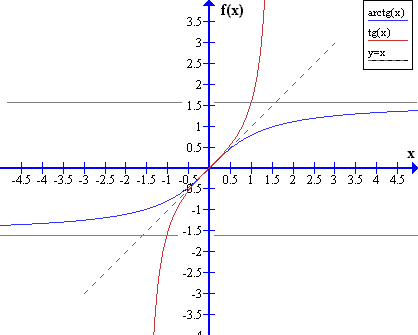Arctan Calculator (Inverse Tangent)
Use this arctan calculator to quickly find the inverse tangent. Whether you're looking for a simple answer to the question "what is an arctan?" or are curious about the integral or derivative of arctan, you've come to the right place. Below, you'll also find the arctan graph, as well as a neat table with commonly used values, such as arctan(1) and arctan(0). Alternatively, you can simply type the value of interest into this tool and you'll find the answer in the blink of an eye.
Interested in more advanced trigonometry? Check out our law of sines calculator and law of cosines calculator calculators if you have any triangles to solve.
What is arctan?
Arctangent is the inverse of the tangent function. For an in-depth analysis of the tangent, visit our tangent calculator. Simply speaking, we use arctan when we want to find an angle for which we know the tangent value.
However, in the strictest sense, because the tangent is a periodic trigonometric function, it doesn't have an inverse function. Still, we can define an inverse function if we restrict the domain to the interval where the function is monotonic. The commonly chosen interval, , is called a principal value, and is, at the same time, the range of an inverse tangent function.
Abbreviation | Definition | Domain | Range of usual principal values |
|---|---|---|---|
all real numbers |
| ||
Using the convention may lead to confusion about the difference between arctangent and cotangent. It turns out that arctan and cot are really separate things:
- , so cotangent is basically the reciprocal of a tangent, or, in other words, the multiplicative inverse.
- is the angle whose tangent is .
We hope that now you do not doubt that arctan and cotan are different. To avoid any further misunderstandings, you may want to use the rather than notation.
🙋 Explore Omni if you want to learn how to calculate all the trigonometric functions!
Arctan graph
By restricting domain of the principal tangent function, we obtain the inverse tangent that ranges from radians exclusively. However, the domain of an arctangent function is all real numbers. The graph then looks as follows:
rad | deg | |

How is this arctan graph created? By reflecting the in the range through the line . You can also look at it as swapping the horizontal and vertical axes:

Arctan properties, relationships with trigonometric functions, integral and derivative of arctan
The relationships in trigonometry are crucial to understanding this topic even more thoroughly. Inspecting the right-angled triangle with side lengths and is a good starting point if you want to find the relationships between arctan and the basic trigonometric functions:
- Sine: ;
- Cosine: ; and
- Tangent: .
Other useful relationships with arctangent are:
- .
- .
- (meet the arcsin at the arcsin calculator!).
- Integral of arctan:
- Derivative of arctan:
- , for and , for
It's easy to prove the first equation from the properties of the right triangle with side lengths and , as we perfectly know that the sum of angles in a triangle equals . Subtracting the right angle, which is , we're left with two non-right angles, which must sum up to . Thus, we can write the angles as and .
Arctan calculator - how to use
This is one of our easiest calculators to use, really! Just enter the number which you want to find the arctan of. As the domain of arctan is all real numbers, you don't need to worry too much. Let's say we want to find the arctan of 1. Just type in the number and the inverse tangent calculator will display the result. As we expected, the arctan of 1 is equal to . This arctan calculator works the other way round as well, that is as a standard tangent calculator - type the angle into the second box and tangent of that angle will appear.